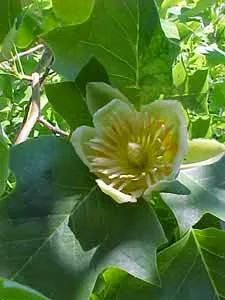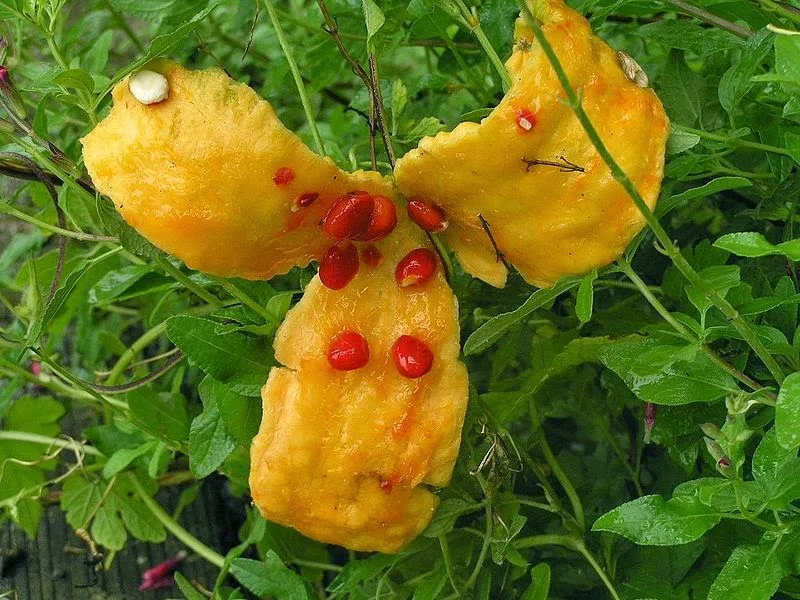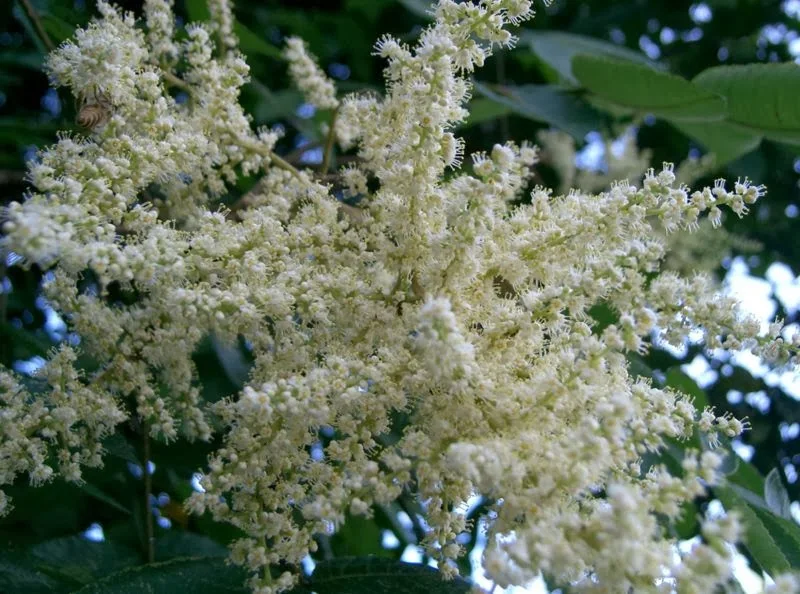By Liliana Usvat
Blog 324-365

Plumeria (English) Sac Nicte (Maya) Flor de Mayo (Spanish), Plumeria rubra, from the Apocinaceae family, it is native to Mexico and South-America. Today this perfumed flowering tree is found in many tropical countries. Plumeria trees bloom during the spring in Yucatan.

Frangipani flowers are also traditionally used in leis – Hawaiian necklaces made from leaves, seashells, ivory and flowers. The leis are made by stringing flowers through the centre until a complete necklace is formed. Polynesian custom is that leis are worn at weddings and given out to signify a genuine welcome – and a fond farewell – for visitors to Hawaii.
Flowers have various tones from white, yellow, rose, and magenta.
Each separate species produces differently shaped, alternate leaves with specific forms and growth habits. Frangipani add a sweet aroma to the night’s air as they are nocturnally fragrant.
These plants can reach a height of 6 meters and a spread of 5 meters wide but may grow even taller depending on age. Many Queensland gardeners who plant frangipani enjoy their beautiful fragrant smells and colors throughout the summer while they sit and relax in its shade.
Frangipani is considered one of the best plants grown in subtropical
and tropical climates which is great considering that they are not
extremely difficult to care for.
These shrubs and small trees propagate well from aseptically germinated seed and cuttings obtained in the winter or early spring when their sap is less runny. These cuttings need to be left out in an area where they can dry out before planting. The soil you plant in must be well-drained as moist soil promotes plant disease.
When watering frangipani you want the soil to remain just above a state of dryness. This plants thrives well in full sun especially in the early hours of the day and may also do well in partial shade in the late afternoon hours. The better balance maintained between sunlight and water the better chance you have of significant growth and bloomage.
Frangipani pruning is best done in the winter after these trees have shed their leaves. It is also useful to prune young frangipani to promote a strong and healthy structure. With proper care, you can enjoy the magnificent flowers of frangipani shrubs and trees from November to May.
Medicinal Uses

Among ulcers, gonorrhea (gonorrhea), swelling, warts, calluses, smoothes the skin and yaws.
If you want to add more trees to your yard for shade or more color in the summer and fall, plumeria grows relatively quickly directly from cuttings -- with the added benefit of not having to purchase an expensive new tree. Cut a branch off the tree in the spring, making sure it's a reasonable size. Limbs about 1 to 2 inches in diameter work well for propagation, although you can use larger branches if you need to trim them to help shape the tree. Dip them in rooting hormone, and place them cut-side-down in well-draining soil, such as a mixture of garden soil and perlite or a cactus mix. The branch should start developing roots within two weeks and can begin blooming in about two years.
Curiosities
Blog 324-365
Frangipani names around the world
The botanic name is Plumeria. Around the world the frangipani (plumeria) is called:
The botanic name is Plumeria. Around the world the frangipani (plumeria) is called:
- The Aztec word is Cocaloxochite.
- Tipanier in Tahiti.
- Dok jampa or Dok champa in Laos
- Pomelia and Frangipane in Italy
- Couleuvre, or Snake Tree in St.Barths Bois
- Kemboja kuning in Malaysia
- Pansal Mal in Sri Lanka
- Jepun in Bali, Indonesia
- Flor de Mayo in Yucatan, Puebla, El Salvador
- Flor de la Cruz in Guatemala
- Pumeli or Melia in Hawaii
- Amapola in Venezuela
- Kang Nai Xin in China
- Phool in India
- Hoa Su (Southern ), Hoa Dai (Northern) and Hoa Su Ma (ghost Plumeria) in Vietnam
- Kalachuchi in the Philippines
- Flor de Cebo in the Canary Islands
- Sacuanjoche in Nicaragua (the name is derived from the word "xacuan" from a native language called náhuatl and means "precious yellow feather or flower".
- Common names are Temple Tree or Pagoda Tree in India and the Far East, Graveyard Tree in the Caribbean Islands, Temple Flower in Sri Lanka, and May flower (for the time of flowering) in Nicaragua.

Plumeria (English) Sac Nicte (Maya) Flor de Mayo (Spanish), Plumeria rubra, from the Apocinaceae family, it is native to Mexico and South-America. Today this perfumed flowering tree is found in many tropical countries. Plumeria trees bloom during the spring in Yucatan.

Frangipani flowers are also traditionally used in leis – Hawaiian necklaces made from leaves, seashells, ivory and flowers. The leis are made by stringing flowers through the centre until a complete necklace is formed. Polynesian custom is that leis are worn at weddings and given out to signify a genuine welcome – and a fond farewell – for visitors to Hawaii.
Flowers have various tones from white, yellow, rose, and magenta.
Each separate species produces differently shaped, alternate leaves with specific forms and growth habits. Frangipani add a sweet aroma to the night’s air as they are nocturnally fragrant.
These plants can reach a height of 6 meters and a spread of 5 meters wide but may grow even taller depending on age. Many Queensland gardeners who plant frangipani enjoy their beautiful fragrant smells and colors throughout the summer while they sit and relax in its shade.
Growing Frangipani By Propagating Cuttings
These shrubs and small trees propagate well from aseptically germinated seed and cuttings obtained in the winter or early spring when their sap is less runny. These cuttings need to be left out in an area where they can dry out before planting. The soil you plant in must be well-drained as moist soil promotes plant disease.
When watering frangipani you want the soil to remain just above a state of dryness. This plants thrives well in full sun especially in the early hours of the day and may also do well in partial shade in the late afternoon hours. The better balance maintained between sunlight and water the better chance you have of significant growth and bloomage.
Frangipani pruning is best done in the winter after these trees have shed their leaves. It is also useful to prune young frangipani to promote a strong and healthy structure. With proper care, you can enjoy the magnificent flowers of frangipani shrubs and trees from November to May.
Medicinal Uses

Among ulcers, gonorrhea (gonorrhea), swelling, warts, calluses, smoothes the skin and yaws.
- The raw material essential oils. Frangipani flowers are dried, for approximately 3-4 days, then distilled to produce essential oils, which is the basic ingredient of the perfume or ointment (for treatment) naturally.
- Overcoming swelling. How to cure swollen body parts is the frangipani tree bark. Way, take first shingle frangipani tree bark and pounded until smooth. Boil half a pot of water to boil. The water used to soak the swollen body parts if possible. If not, use it to compress.
- As antibiotics. Frangipani flower has a number of compounds that have medicinal properties, namely triterprenoid Amirin, lupeol, and fulvoplumierin. These substances are antipyretic (fever lowering), antiinflarnatif (overcoming inflammation), and analgesic (pain relieving). Because the contents of this, frangipani flower handy to reduce menstrual pain and prevent fainting due to the heat or sun exposure (heat stroke).
- Treat toothache. To relieve pain in cavities. Take a few drops of sap Frangipani by using a cotton swab, then place the cotton on the aching tooth. Be careful, do not let the teeth do not hurt. The dose 1-2 times a day. However, treatment with the sap is only temporary, and can not heal completely.
- As drug ulcers. Benefits and efficacy of frangipani flowers for one's health is as ulcer medications you must provide frangipani flowers and leaves of the olive oil. The combination of these two drugs that will cure ulcers. First take frangipani flower on fire then heat until wilted. Eventually the interest spread with olive oil. In circumstances still hot, stick it on your ulcer.
- Curing Diabetes Pus (Gonorrhea). Rinse and 1 piece of root frangipani trees, then boiled in two cups of water to boil and the remaining 1 cup. The herb water taken once a day as much as 1 cup.
- Curing yaws. Take 2 shingles skin frangipani, then finely ground and boiled with 1 pot of water to a boil. Water used for bathing and rubbing the injured body part.
Facts - Good for Reforestation in hot areas.
Did you know that frangipanis will only burn in extreme heat (over 500 degrees)?If you want to add more trees to your yard for shade or more color in the summer and fall, plumeria grows relatively quickly directly from cuttings -- with the added benefit of not having to purchase an expensive new tree. Cut a branch off the tree in the spring, making sure it's a reasonable size. Limbs about 1 to 2 inches in diameter work well for propagation, although you can use larger branches if you need to trim them to help shape the tree. Dip them in rooting hormone, and place them cut-side-down in well-draining soil, such as a mixture of garden soil and perlite or a cactus mix. The branch should start developing roots within two weeks and can begin blooming in about two years.
Curiosities
- The frangipani is the flower of the city of Palermo in Sicily, Italy.
- The frangipani is the national flower of Nicaragua and it features on some of their bank notes.
- Frangipanis won't burn except in extreme (over 500 degrees) temperatures.
- In Caribbean cultures the leaves are used as poultices (a healing wrap) for bruises and ulcers and the latex is used as a liniment for rheumatism.
- According to Cunningham's Encyclopedia of Magical Herbs (by Scott Cunningham; Llewellyn Publications, 1984) the frangipani (plumeria) is associated with the feminine, ruled by Venus, its element is water, its deity is Buddha, its power is love and its magical uses are in love spells.
- The frangipani is also associated with love in feng shui.
- In modern Polynesian culture, the frangipani can be worn by women to indicate their relationship status - over the right ear if seeking a relationship, and over the left if taken.
- In India the frangipani is a symbol of immortality because of its ability to produce leaves and flowers even after it has been lifted out of the soil. It is often planted near temples and graveyards, where the fresh flowers fall daily upon the tombs.
- In Vietnam the frangipani is used for its healing qualities: the bark, mashed in alcohol, prevents skin inflammation, it is also used to treat indigestion and high blood pressure, while the roots have purgative effects on animals and the milk-like sap serves as a balm for skin diseases. The white flowers are used in traditional medicine to cure high blood pressure, haemophilia, cough, dysentery and fever.
Frangipani Myths and Legends
- There is a theory that Catholic missionary priests spread frangipanis (Plumerias) around the world as they travelled. This may explain why the frangipani is so popular and common in the Philippines and Thailand but very rare in China and Vietnam. Thailand and the Philippines welcomed the Christian missionaries while, in China and Vietnam, they were persecuted until around the 1850s.
- Frangipani trees were once considered taboo in Thai homes because of superstitious associations with the plant's Thai name, lantom, which is similar to ratom, the Thai word for sorrow. As a result, frangipanis were thought to bring unhappiness. Today, however, the blossoms are presented as fragrant offerings to Buddha and Thai people wear them on special festival days like Songkran (Thai New Year).
- According to Vietnamese myth, ghosts live in trees with white and fragrant flowers including the frangipani. In Vietnam and China the colour white is associated with death and funerals.
- In Hindu culture, the flower means loyalty. Hindu women put a flower in their hair on their wedding days to show their loyalty to their husbands.
- It's believed the Aztecs used a decoction of frangipani flowers and other plant materials mixed with certain internal organs of predatory animals (with a reputation for cunning, strength and bravery) as a powerful potion against fear, lethargy and faintheartedness.
- "Warming" oils -- such as those from Plumeria, sandalwood, lotus flower, frankinense, cinnamon and basil -- are said to have a calming influence on those suffering from fear, anxiety, insomnia or tremors, according to the principles of Ayurveda, a 5,000-year-old Indian holistic science that seeks to balance mind, body and spirit.
- A popular legend among sailors shipping overseas from Hawaii during WWII was to toss a lei into the waters as the ship passed Diamond Head. If the lei floated ashore, the sailor would return. If it floated toward the ship, he wouldn't be coming back.
- In the language of flowers, Frangipani (Plumeria) are said to stand for love long in absence, as for a sailor long at sea.
- Frangipani (Plumeria) is very rare in China, and even more precious than orchids. So, when a person gives frangipani flowers to a sweetheart, it is the closest thing to saying you're special, I love you in a culture where expression of personal feelings is frowned upon.
- According to Mexican (Lakandon) myth the gods were born from Frangipani (Plumeria) flowers.
- In Malay folklore the scent of the frangipani is associated with a vampire, the pontianak.































